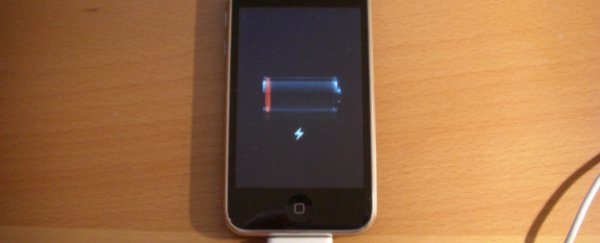Smartphones could soon last longer on a single charge, thanks to new technology that's been developed by researchers at the University of Utah in the US.
The engineers have developed an ultra-thin polarised filter that, instead of blocking at least 50 percent of all visible light, will allow our screens to be far brighter and way more efficient.
All the light we see every day is polarised - with pretty much half being polarised along a horizontal axis and half along a vertical axis. Polarised filters block all the light on one of these axes and they're a crucial part of technology. A combination of filters is used to control the pictures that appear on LCD screens, and reduce the glare when we take photographs in bright sunlight.
But unfortunately the filters also have their downsides.
"When you take a picture and put the polarised filter on, you are trying to get rid of glare," electrical and computing engineer Rajesh Menon told NanoWerk. "But most polarisers will eliminate anywhere from to 60 to 70 percent of the light. You can see it with your eyes."
It also means that in order for you to actually be able to see your smartphone screen, a whole lot of light needs to shine out of it, which is a huge drain on your battery life.
But now the researchers believe they may have the solution to the problem. They've created a polarising filter that still has all the benefits of polarisation, but allows around 74 percent of light to pass through - that's around 30 percent more than the filters we currently use.
"If one can increase that energy efficiency, that is a huge increase on the battery life of your display. Or you can make your display brighter," said Menon.
Their filter is made out of silicon, and has been etched with microscope pillars and holes, which, instead of bouncing back more than half of all light, convert it into the desired polarised state. The results are published in the journal Optica.
The team has so far only tested a 20 micrometre by 20 micrometre piece of this material with infrared light. But they're now trying to find a way to cheaply increase its size and begin testing it with visible light. They believe the technology could be on the market within five to 10 years.
Their aim is to eventually use the filter to allow 100 percent of visible light to pass through, while converting it to the desired polarised state. If they can achieve this, the technology could also be used to help improve scientific devices such as microscopes and telescopes, as well as make LCD displays around cities more environmentally friendly.
And while that's all definitely exciting, we can't lie - we just want to be able to go more than a day on a single charge. Bring it on.
Source: NanoWerk
